
|
|
|
41.4 PATH PLANNING
������������Basic - "While moving the robot arm from point A to B, or along a continuous path, the choices are infinite, with significant differences between methods used."
41.4.1 Slew Motion
������������The simplest form of motion. As the robot moves from point A to point B, each axis of the manipulator travels as quickly as possible from its initial position to its final position. All axis begin moving at the same time, but each axis ends it motion in a length of time that is proportional to the product of its distance moved and its top speed (allowing for acceleration and deceleration)
Note: slew motion usually results in unnecessary wear on the joints and often leads to unanticipated results in the path taken by the manipulator.
Example - A three axis manipulator with revolute joints starts with joint angles (40, 80, -40)degrees, and must move to (120, 0, 0)degrees. Assume that the joints have maximum absolute accelerations/decelerations of (50, 100, 150) degrees/sec/sec, and the maximum velocities of (20, 40, 50) degrees/sec. Using slew motion, what is the travel time for each joint?
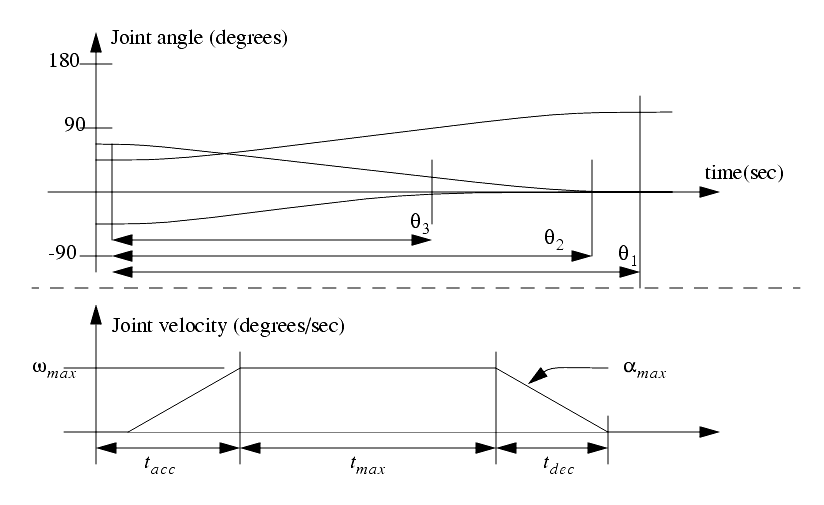
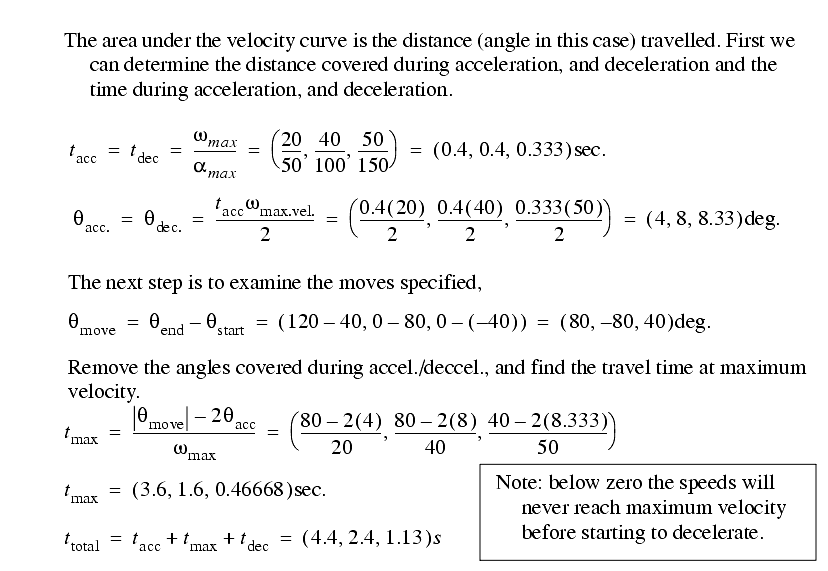
41.4.1.1 - Joint Interpolated Motion
������������Similar to slew motion, except all joints start, and stop at the same time. In the last example for slew motion, all of the joints would have moved until all stopping simultaneously at 4.4 seconds.
This method only demands needed speeds to accomplish movements in least times.
41.4.1.2 - Straight-line motion
������������In this method the tool of the robot travels in a straight line between the start and stop points. This can be difficult, and lead to rather erratic motions when the boundaries of the workspace are approached.
NOTE: straight-line paths are the only paths that will try to move the tool straight through space, all others will move the tool in a curved path.
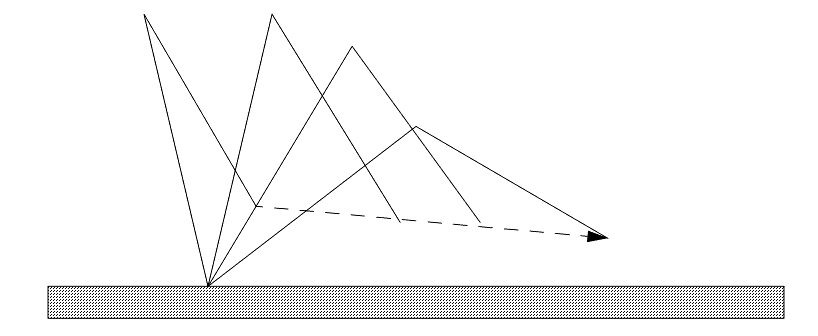
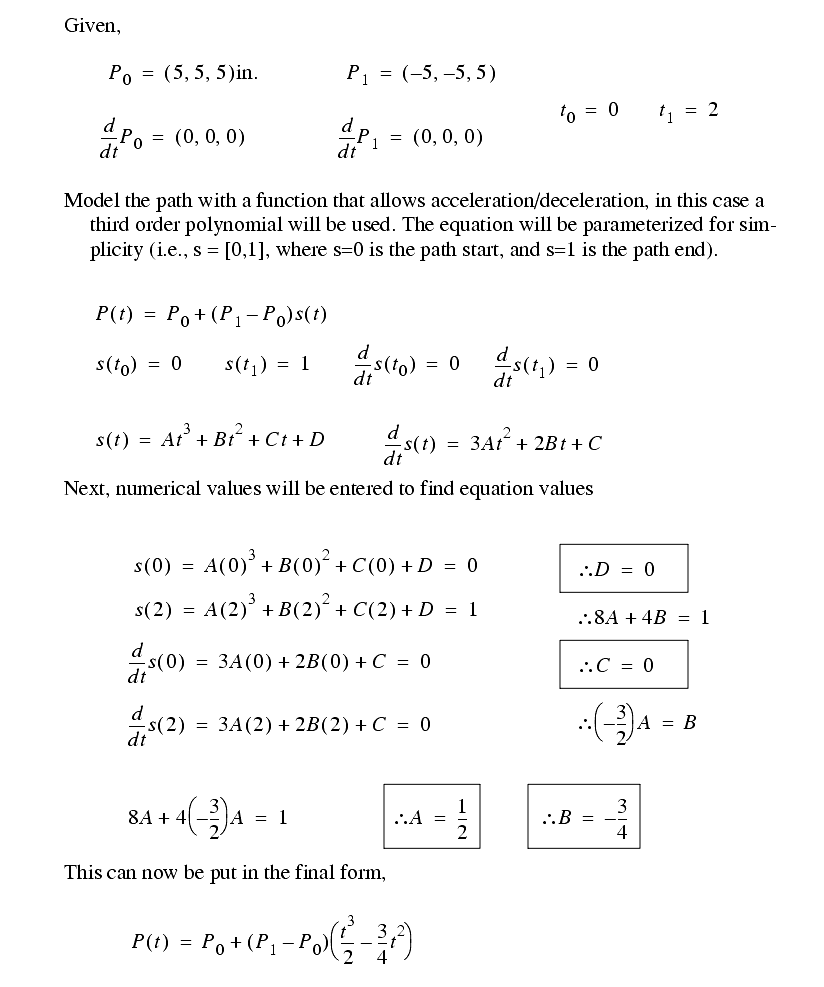
41.4.2 Computer Control of Robot Paths (Incremental Interpolation)
������������Path Planning is a simple process where the path planning methods described before (such as straight line motion) are used before the movement begins, and then a simple real-time lookup table is used.
The path planner puts all of the values in a trajectory table.
The on-line path controller will look up values from the trajectory table at predetermined time, and use these as setpoints for the controller.
The effect of the two tier structure is that the robot is always shooting for the next closest `knot-point' along the path.
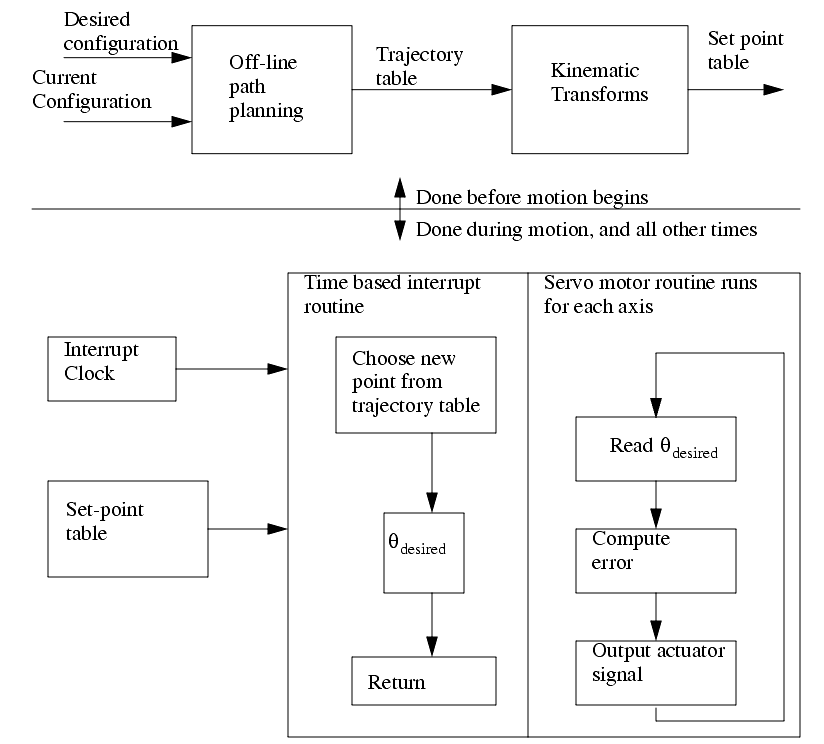
The above scheme leads to errors between the planned, and actual path, and lurches occur when the new setpoints are updated for each servo motor.
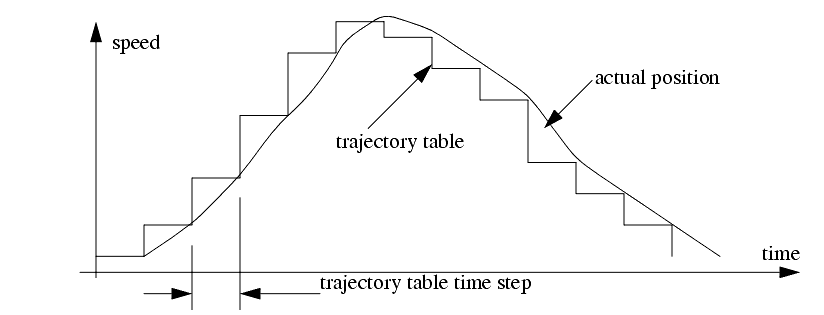

The quantization of the desired position requires a decision of what value to use, and this value is fixed for a finite time.
The result is that the path will tend to look somewhat bumpy,
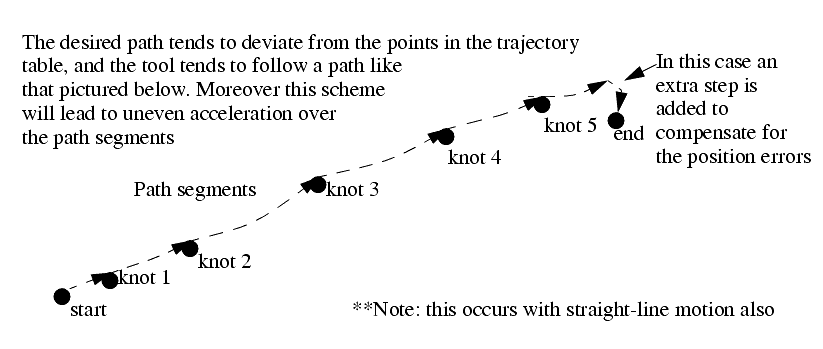
Search for More: |

Custom Search
|

|